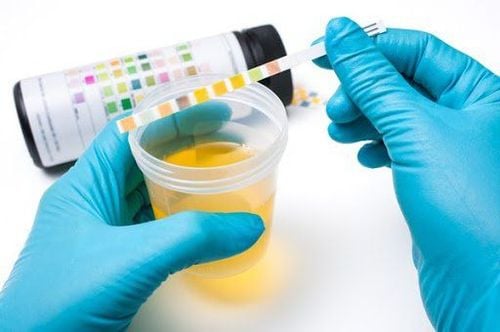This is an automatically translated article.
The article was professionally consulted by Specialist Doctor I Nguyen Thi My Linh - Neonatologist - Department of Pediatrics - Neonatology - Vinmec Danang International General Hospital. Specialist Doctor I Nguyen Thi My Linh has 12 years of experience in diagnosing and treating pediatric diseases.1. What is congenital urea metabolism disorder?
The primary role of the Urea cycle is to convert nitrogen, a waste product from protein metabolism and dietary intake, into urea. Normally, urea will be excreted in the urine, if the urea metabolism cycle is disturbed, nitrogen will not be metabolized, accumulated in the form of Ammonia (toxic to the body), especially for nervous system, should be called congenital urea cycle disorder.This is an inborn metabolic disorder and a group of rare diseases in neonates. Congenital urea metabolism disorders, if not detected early and treated promptly, can lead to serious complications, even death.

2. Causes of congenital urea metabolism
The cause of innate urea metabolism is that when entering the body, protein will be broken down into amino acids, amino acids will provide energy for necessary activities of the body. During this process nitrogen is produced (the waste product), a metabolic cycle consisting of many different reactions called the urea cycle that removes nitrogen from the blood, converts nitrogen to urea, and is excreted by the kidneys. in the form of urine.Urea metabolism involves many enzymes and cofactors that catalyze the reactions. In people with congenital disorders of urea metabolism, the enzyme involved in the cycle is lost or reduced in activity, so the reaction in the cycle does not take place completely, leading to accumulation of Ammonia (NH4). When ammonia accumulates in high concentrations, it will poison the nervous system and parts of the body.
3. Symptoms of congenital urea metabolism disorder
Depending on the enzyme deficiency and extent, the disease presents with the following symptoms:Neonatal onset:
Neonatal sepsis or neonatal hypoxia. Infants born with a congenital disorder of urea metabolism often appear normal, but their health deteriorates when ammonia accumulates in the body. The baby shows signs of discomfort, poor feeding, skipping or vomiting

Late-onset stage:
Early manifestations may include hyperactive behavior with screaming and self-injurious behavior. Do not eat meat or other protein-rich foods The following late symptoms include frequent vomiting, especially after high protein meals, delirium If not diagnosed and treated promptly the patient falls into coma and death.
4. Diagnosis and treatment
4.1 Diagnosis of congenital urea metabolism disorders Congenital urea metabolism disorders, if not properly diagnosed and detected early for timely treatment, can lead to serious complications, even death for patients. patient. The diagnosis is made based on:Urinalysis and analysis to detect abnormal metabolites. Blood tests to check for elevated levels of ammonia and amino acids. Liver biopsy to check for decreased enzyme levels. Genetic testing to detect disease genes.

Using drugs to reduce blood ammonia, help improve disease well. Remove ammonia by dialysis or similar methods. Reverses catabolism by providing a high energy source and, in some cases, by inhibiting insulin hormone activity. Limit protein in food, supplement with drugs, food containing essential amino acids, food providing energy; vitamin and mineral supplements and the use of nitrogen detoxifiers. Children with the disease also need to be checked periodically to make sure the amount of protein the body absorbs is in the right range and the metabolism is well controlled. Clinical assessment of weight gain, height gain, head circumference - for infants, liver size, appearance of hair, skin and nails. Check biochemical indicators such as plasma ammonia concentration, amino acid quantification, liver enzymes and total protein, albumin, prealbumin and iron content. The pediatric department at Vinmec International General Hospital is the address for receiving and examining diseases that infants and young children are susceptible to: viral fever, bacterial fever, otitis media, pneumonia in children. ,... With modern equipment, sterile space, minimizing the impact as well as the risk of disease spread. Along with that is the dedication from the doctors with professional experience with pediatric patients, making the examination no longer a concern of the parents.
Please dial HOTLINE for more information or register for an appointment HERE. Download MyVinmec app to make appointments faster and to manage your bookings easily.














